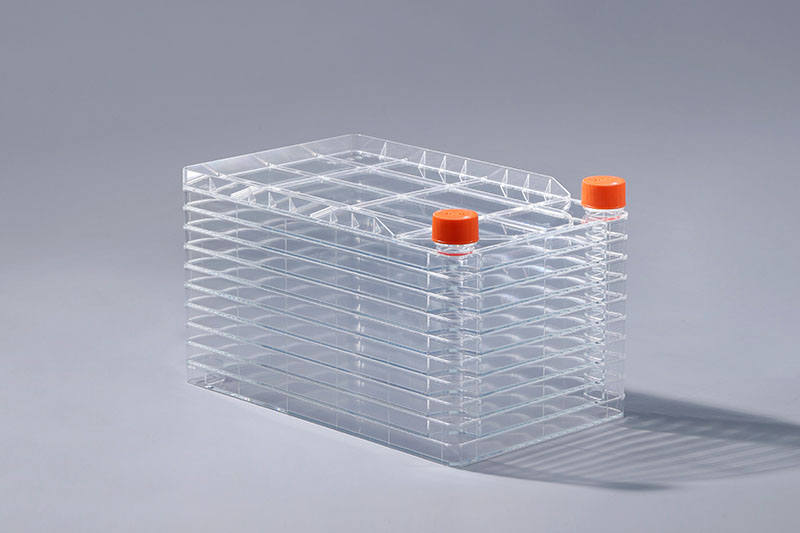Cell factory play an important role in vaccine production, monoclonal antibodies and the pharmaceutical industry, and are mostly used for the culture of adherent cells. Compared with other cell culture vessels, it has the following advantages:
Small footprint: The cell factory adopts a multi-layer structure design, also known as a multi-layer cell incubator. Common specifications include 1 layer, 2 layers, 5 layers, 10 layers, 40 layers, etc. To expand the culture scale, you only need to increase the number of layers of the product That is, it will not take up too much space, which can save a lot of plant space for enterprises, and reduce the cost of quality control and downstream purification of their enterprises.
Reduce pollution: This container is equipped with a full set of accessories, including liquid transfer cover, small port conversion cover, CPC adapter, tee pipeline, silicone tube/hot melt tube, ECS quick connector, etc. Through the mutual cooperation of different pipelines and accessories, To achieve aseptic transfer of liquids, multiple cell factories can also be connected in series to form a closed pipeline to reduce the risk of cell contamination. This is a very important point in the large-scale culture of cells, and the reduction of the probability of contamination can also reduce the production cost of enterprises.
In general, the cell factory adopts a special structural design, which not only saves a lot of plant space, but also reduces the risk of exogenous contamination of cells through the supporting pipeline system, which is of great significance to the cost control of enterprises. This cell culture vessel has also gradually replaced the cell spinner flask and has become the main choice for large-scale cell culture.
The FAI climbed 5.9 percent year-on-year in the first 11 months of 2018, quickening from the 5.7-percent growth in Jan-Oct, the National Bureau of Statistics (NBS) said Friday in an online statement.
The key indicator of investment, dubbed a major growth driver, hit the bottom in August and has since started to rebound steadily.
In the face of emerging economic challenges home and abroad, China has stepped up efforts to stabilize investment, in particular rolling out measures to motivate private investors and channel funds into infrastructure.
Friday's data showed private investment, accounting for more than 60 percent of the total FAI, expanded by a brisk 8.7 percent.
NBS spokesperson Mao Shengyong said funds into weak economic links registered rapid increases as investment in environmental protection and agriculture jumped 42 percent and 12.5 percent respectively, much faster than the average.
In breakdown, investment in high-tech and equipment manufacturing remained vigorous with 16.1-percent and 11.6-percent increases respectively in the first 11 months. Infrastructure investment gained 3.7 percent, staying flat. Investment in property development rose 9.7 percent, also unchanged.
 English
English



















































